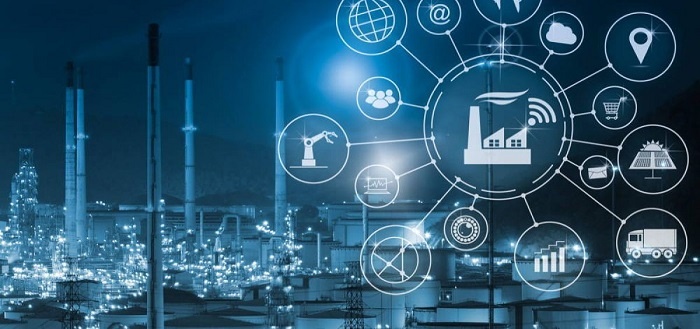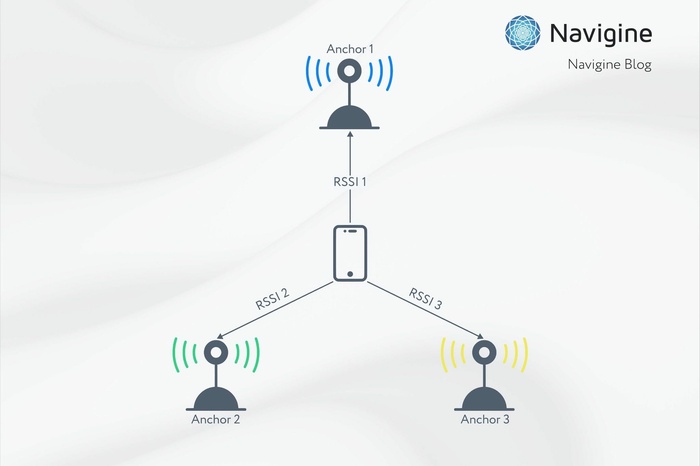The Industrial Internet of Things (IIoT) is a combination of networks and the industrial equipment related to them, supplemented by software and built-in sensors. The IIoT solutions are intended for gathering and exchanging data and can be controlled automatically without human intervention. Recently IIoT systems have been widely used in many spheres of life, for example, for solving various corporate tasks to increase performance efficiency and build innovative models of running a business. The implementation of the technology can lead to the 4th Industrial Revolution that will result in fundamental changes in people’s lives, including work, household, and servicing the needs.
IIoT infrastructure
The implementation of IIoT means the installation of some interrelated components that provide effective digital transformation of business. The main elements of IIoT are the following:
- Connection – communication between computer networks and equipment can be achieved by various technologies, including Bluetooth WLAN, Wi-Fi, UWB, etc.
- Sensors/ beacons – tiny transmitting devices, placed on objects, which send radio signals of a certain frequency.
- An IIoT platform for analyzing and processing data – the basis for defining the location of beacons or sensors. It receives the signals from transmitting devices and sends data to people using the system.
Typical examples of the IIoT platform, intended for processing data, are products from Navigine, mainly Navigine tracking web-service, and Navigine SDK, a set of navigation algorithms that developers can successfully integrate into their mobile applications.
Principles and possibilities of IIoT technology
The implementation of the Industrial IoT solution starts with installing the equipment, including controllers, sensors, hardware, necessary for the interaction between a person and equipment. Then, data is gathered using IIoT software and input into the computer for analyzing the state of the enterprise and monitoring certain information. The received results are distributed around the company’s departments and the employees get access to it for the effective flow of documents and for addressing current challenges.
IIoT solutions opens many possibilities for business:
- Gathering and saving the required expertise.
- Reducing or complete phase-out of paper.
- Business facilitation.
- Operational acquisition of data in emergencies.
- Minimizing risks of hardware failure and deadline delays.
This technology allows processing huge volumes of data. The system transforms data into a more suitable form for users and provides possibilities for filtration that accelerates industrial processes. IIoT devices help to use enterprise assets more rationally, avoid production downtime, reduce costs on repair and electricity bills. The IIoT technology lets the company avoid unnecessary operations at production and improve performance.
IIoT examples
For realizing the set goals, modern enterprises can use various Industrial Internet of Things products. Let’s consider the most common and effective Industrial IoT applications.
Digital doubles
Digital doubles are virtual copies of objects that allow analyzing the work of real physical devices. Thus, the double of the plant can help to manage the enterprise, optimize operations, and the copy of the planned production process gives a possibility to control the product even before its production. Thanks to digital doubles, managers can get detailed information on equipment efficiency, perform predictive maintenance and remote monitoring in real-time.
Radio Frequency Identification (RFID)
RFID is a method of automatic identification that uses tags (transponders) and special readers. The tag is placed on any suitable object (for example, goods) and the reader identifies it using radio waves. The range of identification can vary from several cm to 300 m. With the help of transponders, users can easily track, control, and monitor industrial objects.
Electronic Logging Devices (ELD)
ELDs are special sensors that are installed in a car and allow controlling its speed, travel time, frequency of using brakes. The equipment is usually installed in passenger coaches or trucks and helps to:
- Save fuel.
- Ensure driver’s safety.
- Increase resource efficiency.
As soon as the system detects that the driver has been driving too long or has increased the speed limit, it immediately gives a warning and sends the data to the controller.
Intelligent computing systems outside DSC (Data Service Center)
An intelligent computing system outside DSC is a system of Industrial Internet of Things aimed at improving the quality of service and accelerating industrial processes. It carries out generalization, analysis, and interpretation of the data received from the peripherals. While using these analytical systems, managers can study data on the fly and the risks of data-stealing or snatching are minimized.
Predictive maintenance
Predictive maintenance consists of the systems that receive information from hardware or devices with built-in sensors. They gather and transmit data and then analyze the received data and save it in the database. Later, the gathered database provides users with the reference points that allow analyzing any events. Predictive maintenance helps to avoid unnecessary service and increases the possibility of preventing failures and breakdowns.
What is the main difference between IoT and IIoT?
The main difference between the usual and Industrial Internet of Things (IoT vs IIoT) is in spheres of application. IoT includes any devices aimed at automating daily tasks or managing objects remotely. More often it is used in households, for example, “smart” homes, video surveillance with alert notifications if strangers are approaching, medical bracelets that monitor a patient’s pulse and send the data to the doctor.
According to the IIoT definition, IIoT is a subcategory of IoT that is more oriented to industry and business. It gives a possibility to automate business processes, reduce production costs, and minimize losses. Pollution sensors that monitor compliance with environmental standards, remote equipment start, or beacons on vehicles assisting in tracking cargos can be named as examples of IIoT.
Spheres of IIoT application
Modern IIoT platforms can be used not only in production but also in other spheres. The key areas of application are the following:
- IIoT in manufacturing – the technology can help to monitor machine status and prevent breakages, which results in reducing downtime and increasing the performance efficiency of the enterprise.
- Logistics and warehousing – gives a possibility to order automatically goods and raw materials for production, ensure the continuous availability of goods in stock, and track assets.
- Retail – helps to take decisions on certain sales outlets, use shop windows according to customers’ interests, organize promo-actions.
- Healthcare – allows tracking patients and informing doctors on their state, increases speed and accuracy of response in medical institutions.
- Real estate management – simplifies the management of climate and other systems, increases staff safety, monitors entrances to buildings with an immediate reaction to a potential threat.
Navigine provides possibilities for implementing IIoT platform development for any business. Our clients can enjoy the innovative web services, based on the iBeacon technology, that ensure the quality and reliability of the digital transformation of the enterprise.




